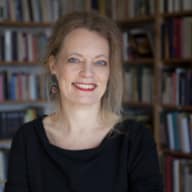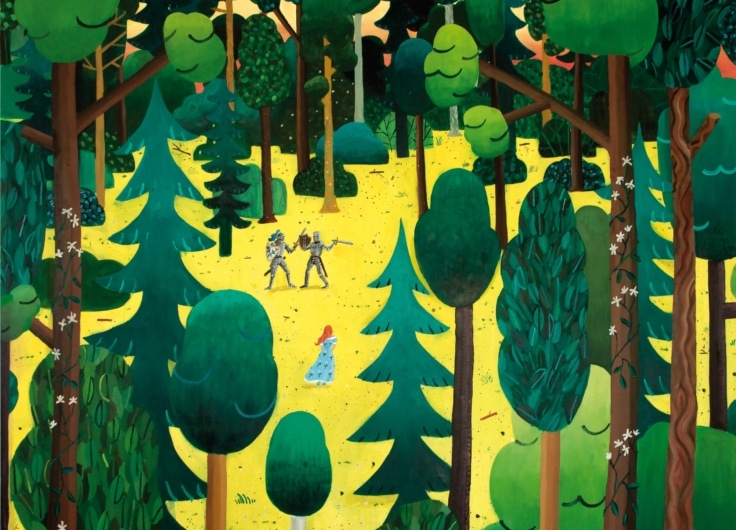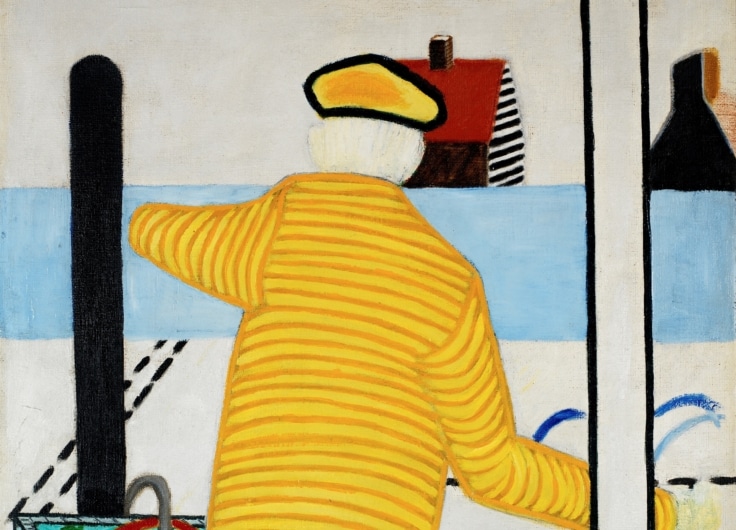Flemish Expressionists in The Hague: An Explosion of Bold Colours, Storytelling, and Painterly Joy
In Wonderful Memories, Kunstmuseum Den Haag highlights the joyful fanaticism of the Flemish Expressionists. Art historian Gerdien Verschoor visits the exhibition featuring work by Gustave De Smet, Frits Van den Berghe, Anna de Weert and Edgard Tytgat. ‘On the banks of the Leie River, the world was still an idyll.’
Sounds of jazz music waft me into the exhibition, but before I view the first painting, I am confronted with text printed high upon the museum wall:
Leie, what wonderful memories I have of the land through which you meander in graceful bends, lazy almost slumbering, to dwell forever there in the lust and luxury of meadowland and thickets. Time passes you by, untouchable, your being unchanged.
…But where have they gone, those friends who exalted you in art, playing games on your banks in the blissful face of your beauty…
© Kunstmuseum Den Haag
Wonderful Memories: Kunstmuseum Den Haag chose these words by Stijn Streuvels for the title of this exhibition on Flemish Expressionism. In the first exhibition room hang paintings that are sunny and light, which immediately sets the tone.
No dark colours, swampy landscapes, nor heavy themes stand central, but rather the cheerful notes, witty scenes, and sometimes dislocating themes. In the catalogue, an entire essay was even dedicated to this notion of Volksvermaak – the amusement and enjoyment of the public.
I myself am also immediately dislocated, realizing how little I really know the Flemish Expressionists. Or is it that I struggle to pin one label to a group of artists so stylistically individual?
No dark colours, swampy landscapes, nor heavy themes stand central, but rather the cheerful notes, witty scenes, and sometimes dislocating themes
“Flemish Expressionism” – my first associations are always with Permeke’s clayey landscapes, Frist van den Berghe’s dark figures, and the escape stories of the First World War. But in Wonderful Memories, which brings together more than a hundred works by Flemish Expressionists from more than ten collections, the tone is radically different.
Rest and belonging
Immediately, in the first room, we see a number of luminist and pointillist works by, among others, Anna de Weert (the only female artist represented in the exhibition), Emile Claus, and the brothers Léon and Gustave de Smet. These works were painted in the first years of the last century, when the world on the banks of the Leie River was still an idyll: clear in colour, light in touch, airy in subject.
This luminism had already passed its peak in the rest of Europe, but still lent itself well to a depiction of the Arcadian world around Sint-Martens-Latem. Like many symbolist artists (George Minne, Valerius de Saedeleer and Gustave van de Woestyne), the Expressionists sought peace, a connection to the landscape, and the simplicity of farm life there.
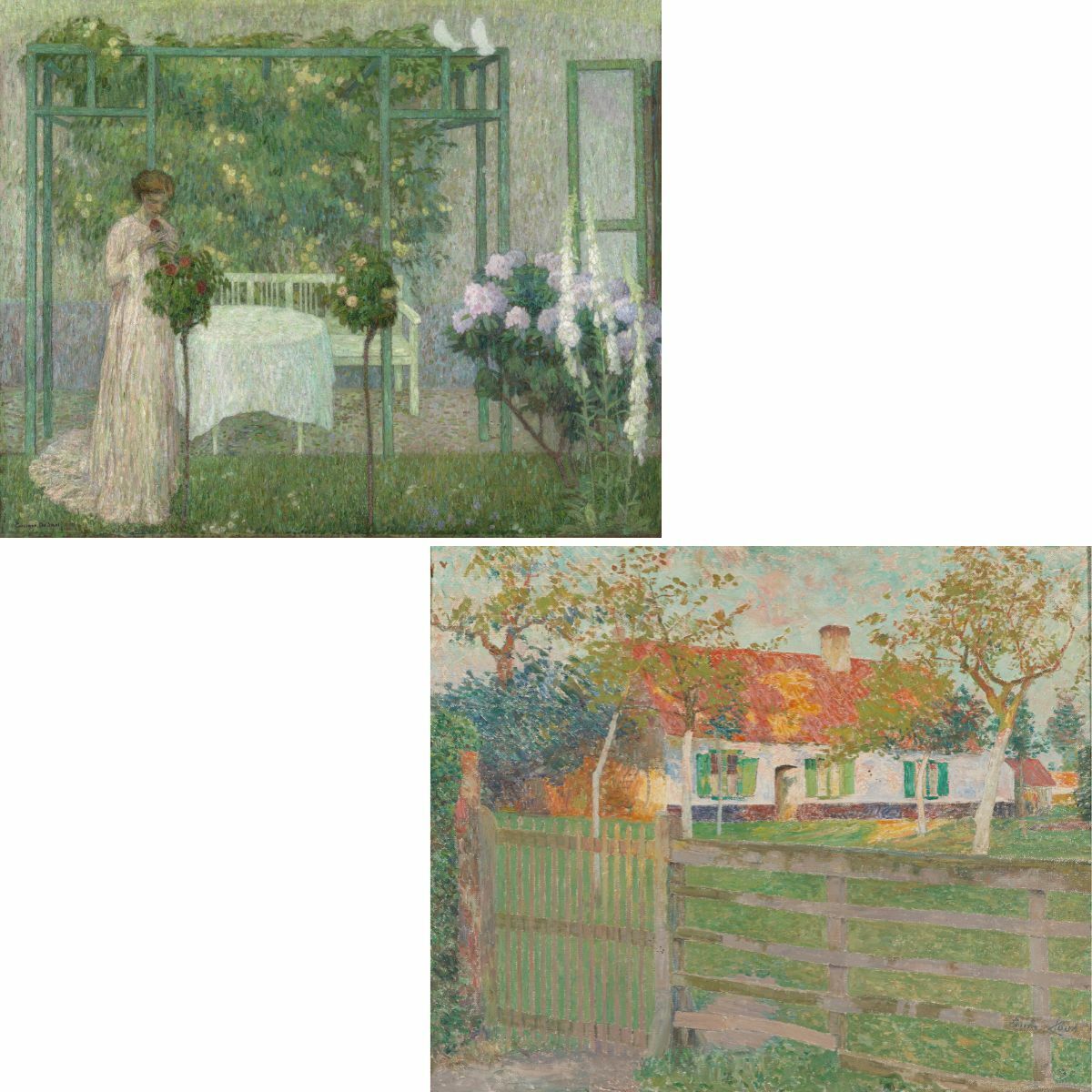 Gustave De Smet, Woman at Rosary, 1912 / Emile Claus, Last Rays of Sunshine on the Farmstead, unknown date
Gustave De Smet, Woman at Rosary, 1912 / Emile Claus, Last Rays of Sunshine on the Farmstead, unknown date© Kunstmuseum Den Haag / The Phoebus Foundation
Then the First World War breaks out. Hundreds of thousands of Belgians flee across the border. Artists like Valerius de Saedeleer, George Minne, and Constant Permeke flee to England, where many are taken in by the two art-loving sisters Gwendoline and Margaret Davies. (Belgian curator and museum director Robert Hoozee, together with Oliver Fairclough, curated a beautiful exhibition about this in 2002: Art in Exile).
Others, like Frits Van den Berghe, Gustave de Smet and Jozef Cantré, end up in the Netherlands, and more specifically in Het Gooi. There, they befriend experimental artists like Leo Gestel, Henri Le Fauconnier and Jan Sluijters. They meet collectors of modern art and read leading modernist magazines like Das Kunstblatt and Der Sturm. These magazines overflowed with German Expressionists, French Fauvists and Cubists, Romanesque art, and non-Western sculpture. All these new images and ideas fed their own idiom, palette and formal language and heralded a new phase in their artistry.
International network
Fast forward. In the exhibition we have now arrived in the roaring twenties, and the artists have found each other back on the banks of the Leie River. The Malperthuis belonging to the couple Paul-Gustave and Norine Van Hecke in Afsnee becomes their new meeting place. Cheerful photos (together in a boat on the Leie, or in a car) tell stories of long and sunny summers.
In one piece by Tytgat we are treated to a snapshot of one happy afternoon – this has become a core piece in the exhibition. A boat with Marc and Bella Chagall (visiting), Norine Van Hecke, Léon de Smet, André de Ridder and Frits Van den Berghe arrives at an (again idyllic) garden where drinks and a gramophone are already waiting. Tytgat looks out the window, Gustave de Smet is practicing archery, and in the distance, someone arrives by bike, hastening to join the group.
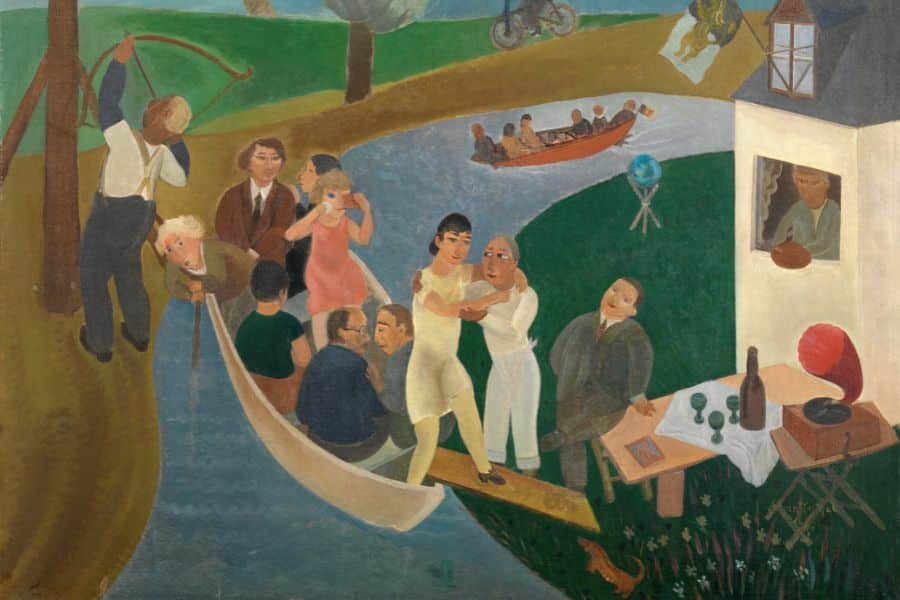 Edgard Tytgat, Reminder of a Sunday, 1926
Edgard Tytgat, Reminder of a Sunday, 1926© Museum Dhondt-Dhaenens
The Van Heckes provided a space for a growing international network of artists who formed a loosely-fixed group – another essay in the catalog vividly describes this world that flourished around the Van Heckes. Visits to Paris and the Netherlands ensured a connection with the international avant-garde. New art was shown in the Brussels gallery Sélection, led by André de Ridder and Paul-Gustave Van Hecke, while the Van Heckes also amassed their own collection.
It was in this period that the term “Flemish Expressionism” originated, a label used at the beginning of the twentieth century for all kinds of “modern” art that differed from Impressionism – it was synonymous with innovation.
Free spirits
Because the Kuntmuseum exhibition is organized thematically (‘On the banks of the Leie River’, ‘Dark Clouds’, ‘Wonderful Memories’, ‘The Village’, ‘Entertainment’), coherence and difference in the individual artists’ style and vision emerge. What unites them is the simplification of form (inspired by French Cubism, German Expressionism, and non-Western art), a love of the rural and simplistic (inspired by their stay on the Leie and the “authentic” life outside the big city), and a distinctive wit.
And then there are their individual qualities: the lightness and drollery in the palette and form of naïve art found in Edgar Tytgat, the flattened shapes, perspective shifts, and Cubist collage techniques found in Gustave De Smet, the large colour planes and Fauvist brush strokes in Frits Van den Berghe.
These Flemish Expressionists were free spirits who fanatically absorbed all kinds of influences
Fortunately, they elude true categorization. These Flemish Expressionists were free spirits who fanatically absorbed all kinds of influences, ready to try something new as soon as they had finished inventing something else. What strikes me is that there is almost always a kind of apparent alienation. Rarely are there characters or situations that you can really connect with. The dark figures, often seen from behind (Frits Van den Berghe), the figures with closed eyes (Gustave de Smet), the card reader (Hubert Malfait): they all live in their own closed world that excludes us, the viewer.
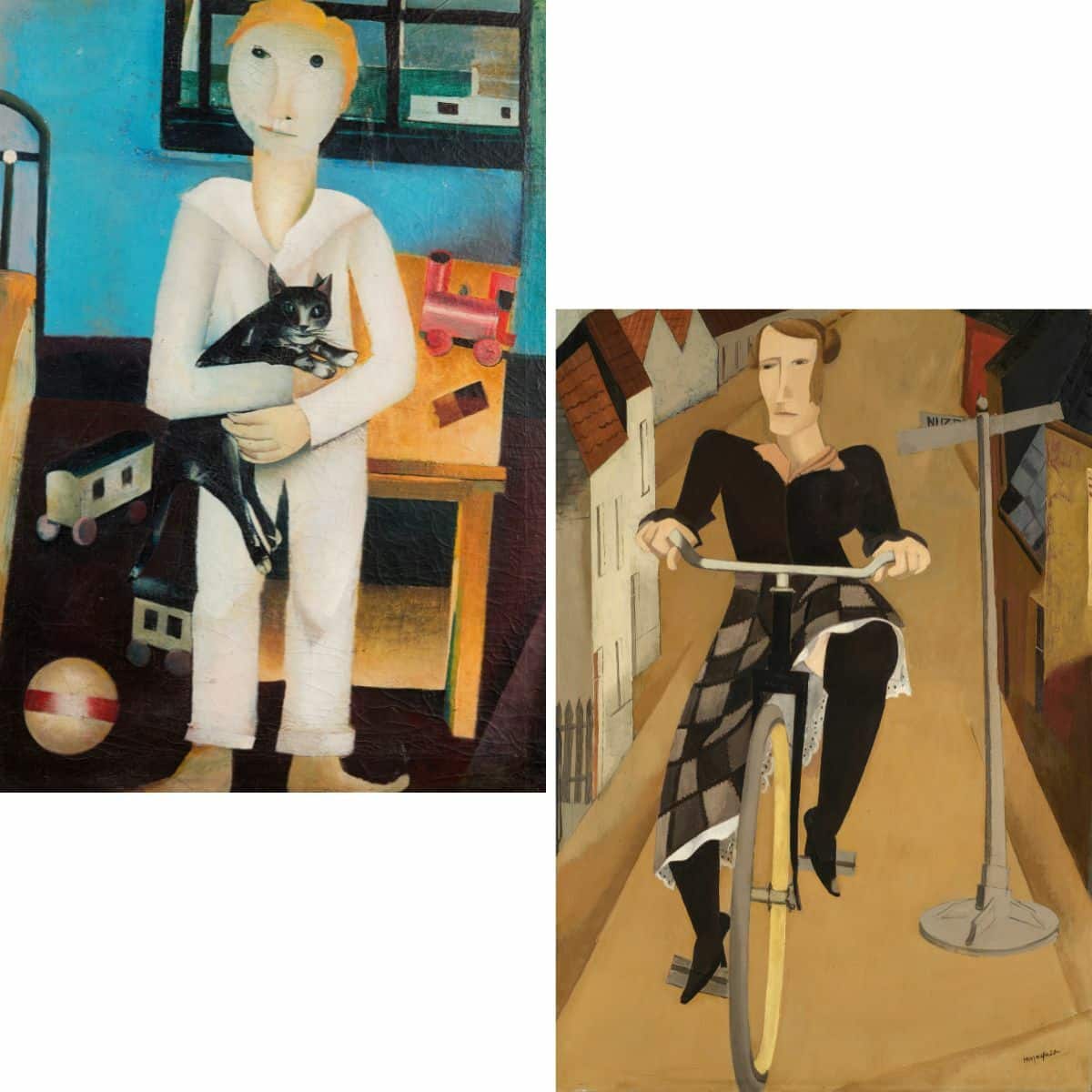 Floris Jespers, Marc Greets Things in the Morning, 1925-1926 / Hubert Malfait, The Cyclist, 1927
Floris Jespers, Marc Greets Things in the Morning, 1925-1926 / Hubert Malfait, The Cyclist, 1927© The Phoebus Foundation
I find myself a little homesick for the nice, sturdy landscapes by Gustave de Smet, Permeke, and Brusselmans, but that’s not really fair because that’s not the subject of this exhibition (and luckily Moon Night with Snow by Gustave De Smet, owned by Kunstmuseum Den Haag, was included in the exhibition).
Slowly I amble from the end of the exhibition back to the beginning. In a large hall, sculptures by Jozef Cantré have been brought together with paintings by his colleagues, so you can see beautifully how the same strong, formal language connects different disciplines.
I arrive in ‘The Village’, where Gustave De Smet’s drunkards play hearts at an inn. In the ‘Entertainment’ room, I admire a model merry-go-round and a fairground canvas by Tytgat. I enjoy Frits Van den Berghe’s brothel scenes, and finally I dive back into the special peep show dedicated to Tytgat’s piquant and witty Huit dames et un monastère.
Arrived back in the first room, I read that beautiful quote by Stijn Streuvels once more, and I would like to answer him this: here they have stayed, Mr. Streuvels, here they play. Dive in, forget about all the -isms, and lose yourself in an explosion of bold colours, storytelling, and painterly joy.
The exhibition Flemish Expressionism: Wonderful Memories can be seen in Kunstmuseum Den Haag until 12 August. An exhibition catalogue (in Dutch) with essays by Peter J.H. Pauwels and Thijs de Raedt was published by Hannibal Books.

